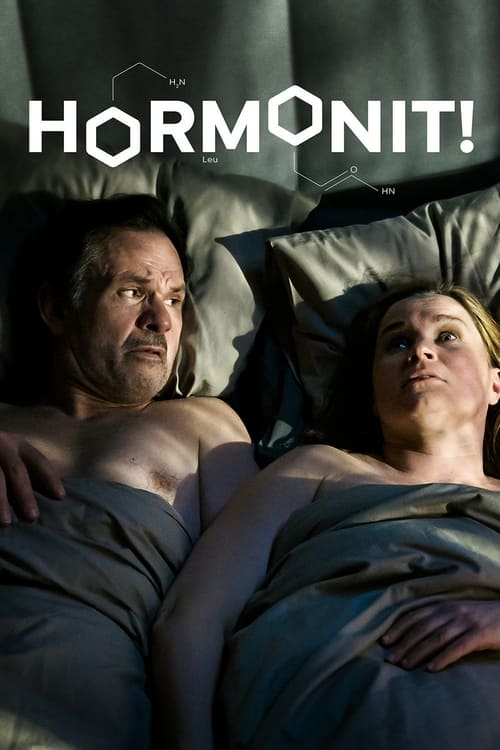
Ask Your Own Question
What is the plot?
In the opening scene of "Dear Children," Season 1, Episode 1, the camera pans over a small, picturesque town at dawn. The sun rises, casting a warm glow over the streets as children begin to gather for school. We are introduced to the main character, Mia, a compassionate and determined teacher in her early thirties, who is seen preparing her classroom with care. She arranges colorful posters and sets up desks, her face reflecting a mix of excitement and anxiety about the new school year.
As the school bell rings, children rush into the classroom, their laughter and chatter filling the air. Mia greets each student warmly, but her attention is drawn to a new boy, Leo, who stands apart from the others, looking anxious and withdrawn. Mia's internal struggle is evident; she wants to reach out to him but is unsure how to break through his shell. The scene captures her empathy and desire to create a safe space for all her students.
Later that day, during recess, Mia observes Leo sitting alone on a bench. She decides to approach him, kneeling down to his level. She gently asks him about his interests, trying to engage him in conversation. Leo hesitates but eventually opens up about his love for drawing. Mia encourages him to share his artwork with the class, hoping to help him connect with his peers. This moment highlights Mia's nurturing nature and her commitment to fostering a supportive environment.
As the school day progresses, tensions arise when a group of older students bullies Leo, mocking his quiet demeanor and artistic interests. Mia witnesses the incident from a distance and feels a surge of protectiveness. She intervenes, firmly addressing the bullies and reminding them of the importance of kindness. The confrontation is tense, and the bullies back off, but Mia's heart races as she realizes the challenges Leo will face in this new environment.
After school, Mia reflects on the day's events while driving home. She feels a deep sense of responsibility for her students, particularly Leo, and worries about how to help him navigate the social dynamics of the school. Her internal monologue reveals her own struggles with self-doubt and the pressure she feels to make a difference in her students' lives.
The next day, Mia organizes an art project for the class, encouraging everyone to express themselves through creativity. She hopes this will help Leo feel more included. As the students work on their projects, Mia circulates the room, offering guidance and praise. Leo begins to open up, sharing his drawings with a few classmates who show genuine interest. This moment marks a turning point for him, as he starts to feel a sense of belonging.
However, the peace is short-lived. During a class presentation, one of the bullies, Jake, publicly ridicules Leo's artwork, causing laughter among the other students. Leo's face falls, and Mia feels a wave of anger and sadness. She steps in again, defending Leo and emphasizing the value of each student's unique talents. The confrontation is heated, and Mia's passion shines through as she advocates for her student, but it also leaves her feeling vulnerable and exposed.
As the episode progresses, Mia decides to meet with Leo's parents to discuss his experiences at school. The meeting is tense; Leo's parents are concerned about their son's well-being but are also skeptical of the school's ability to support him. Mia listens intently, her heart aching for Leo as she realizes the weight of the challenges he faces both at home and in school. She promises to do everything she can to help him thrive.
In the final scenes, Mia reflects on her own journey as a teacher. She stands in front of her classroom, looking at the artwork displayed on the walls, including Leo's pieces. There's a sense of hope as she realizes that small steps can lead to significant changes. The episode ends with Mia looking out the window, contemplating the road ahead, determined to continue fighting for her students and creating a nurturing environment where they can all flourish.
What is the ending?
In the ending of "Dear Children," Season 1, Episode 1, the main characters confront their unresolved issues and emotional struggles. The episode concludes with a poignant moment of connection among the children, as they begin to understand the importance of their relationships and the impact of their choices. Each character faces a personal revelation, leading to a sense of hope for the future.
As the episode draws to a close, the scene shifts to a quiet park where the children gather. The sun sets, casting a warm glow over their faces. They sit in a circle, sharing their thoughts and feelings. The atmosphere is heavy with unspoken words, but slowly, they begin to open up.
First, we see Mia, who has been grappling with feelings of isolation. She takes a deep breath and shares her fears about not fitting in. Her voice trembles, but as she speaks, the others listen intently. This moment of vulnerability allows her to connect with the group, and they respond with empathy, reassuring her that she is not alone.
Next, we focus on Leo, who has been struggling with anger and frustration. He admits to the group that he often feels misunderstood and lashes out as a defense mechanism. The others nod in understanding, and this acknowledgment helps him feel seen. He expresses a desire to change, and the group encourages him, offering their support.
Then, we turn to Ava, who has been dealing with the pressure of expectations from her family. She confesses her fear of disappointing them and reveals her passion for art, which she has kept hidden. The group encourages her to pursue her dreams, and this moment of acceptance brings a smile to her face, illuminating her previously clouded expression.
As the sun dips below the horizon, the children share a collective moment of silence, reflecting on their individual journeys. They realize that while their struggles are personal, they are not alone in facing them. This realization fosters a sense of unity among them.
The episode concludes with the children making a pact to support one another moving forward. They promise to be there for each other, no matter the challenges they face. As they stand up to leave, there is a newfound lightness in their steps, symbolizing hope and the strength of their bond.
In the final shot, the camera pans out, capturing the group walking away together, silhouetted against the fading light. The scene encapsulates the essence of the episode: the importance of connection, understanding, and the courage to face one's fears. Each character leaves with a sense of purpose, ready to embrace the future together.
Is there a post-credit scene?
In "Dear Children," Season 1, Episode 1, there is indeed a post-credit scene that adds depth to the episode's themes. After the main credits roll, the screen fades back in to a quiet, dimly lit room where a young girl, Mia, is seen sitting on the floor surrounded by scattered drawings. The camera zooms in on her face, revealing a mix of determination and sadness as she clutches a crumpled piece of paper.
As she unfolds the paper, the audience sees it is a letter addressed to her estranged father, filled with heartfelt words expressing her longing for connection and understanding. The scene is accompanied by a soft, melancholic piano score that heightens the emotional weight of the moment. Mia's eyes well up with tears, but she wipes them away, showcasing her resilience.
The camera then shifts to a close-up of the letter as she begins to write again, her handwriting shaky but earnest. The scene captures her internal struggle--caught between hope and fear of rejection. The post-credit scene concludes with Mia looking out the window, the light of the setting sun casting a warm glow on her face, symbolizing her desire for a brighter future despite the challenges ahead. This moment encapsulates the overarching themes of the episode: the quest for familial bonds and the courage to reach out, setting the stage for the emotional journeys to come in the series.
What motivates the main character in Episode 1 of Dear Children?
In Episode 1, the main character, Sarah, is driven by her desire to reconnect with her estranged family. She feels a deep sense of guilt for past decisions that led to their separation, and this emotional turmoil propels her to seek forgiveness and understanding.
How does the relationship between Sarah and her mother evolve in this episode?
Throughout Episode 1, Sarah's relationship with her mother, Helen, is fraught with tension and unresolved issues. Initially, there is a palpable distance between them, marked by awkward conversations and unspoken resentment. However, as the episode progresses, moments of vulnerability emerge, revealing Helen's own struggles and fears, which begin to bridge the gap between them.
What significant event occurs that changes the dynamics among the group of children?
A pivotal moment in Episode 1 occurs when the group of children witnesses a traumatic event in their neighborhood, which forces them to confront their fears and insecurities. This shared experience acts as a catalyst, altering their relationships and fostering a sense of unity as they navigate the aftermath together.
How does the character of Liam contribute to the plot in Episode 1?
Liam serves as a source of comic relief and emotional support in Episode 1. His lighthearted nature contrasts with the heavier themes of the episode, but he also reveals deeper layers of his character when he shares his own struggles with family expectations, which resonates with Sarah and the others.
What role does the setting play in shaping the characters' experiences in Episode 1?
The setting of the small, tight-knit community plays a crucial role in Episode 1. The familiar yet stifling environment amplifies the characters' feelings of isolation and longing for connection. Key locations, such as the local park and Sarah's childhood home, evoke nostalgia and serve as backdrops for pivotal interactions that drive the plot forward.
Is this family friendly?
"Dear Children," Season 1, Episode 1, contains several themes and scenes that may be considered sensitive or potentially objectionable for children or sensitive viewers.
-
Emotional Turmoil: The episode explores deep emotional struggles among family members, including feelings of loss, anxiety, and conflict, which may be intense for younger viewers.
-
Family Conflict: There are scenes depicting arguments and misunderstandings between family members, showcasing the complexities of relationships that might be difficult for children to process.
-
Themes of Grief: The episode touches on themes of grief and coping with loss, which could be upsetting for sensitive viewers, especially if they have experienced similar situations.
-
Depictions of Stress: Characters are shown dealing with high-stress situations, which may include moments of frustration or despair that could be unsettling.
-
Mature Conversations: Some dialogues may include mature themes or discussions that are not suitable for younger audiences, addressing issues that require a certain level of maturity to understand.
These elements contribute to the overall emotional depth of the narrative but may not be appropriate for all viewers, particularly children.





























